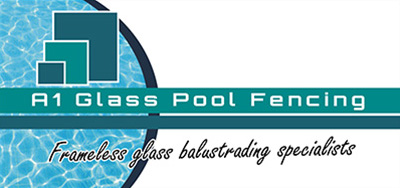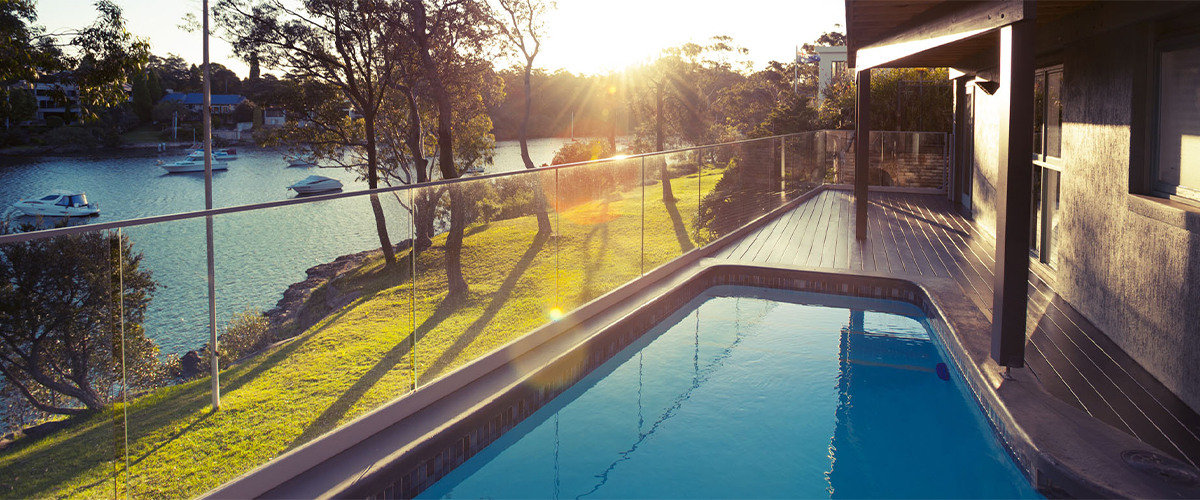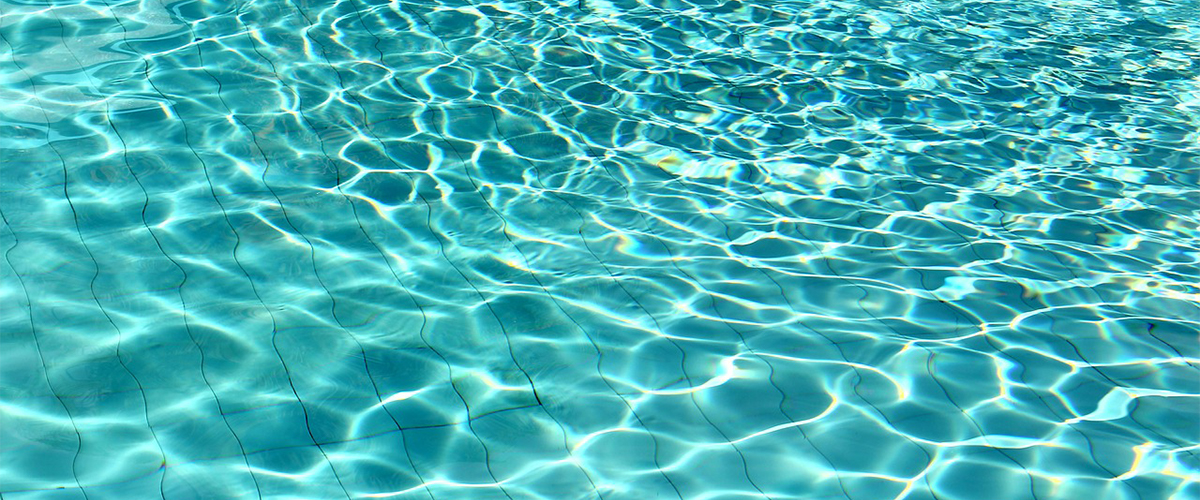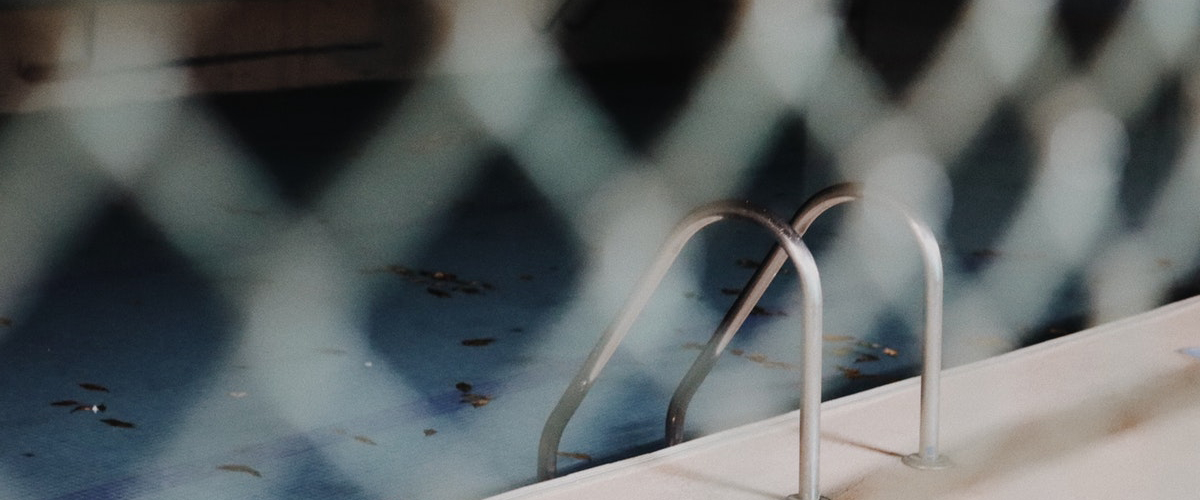
According to statistics, most drownings in private swimming pools happen to children under 5 years. Often, a contributing factor to drowning is inadequate pool fencing. This is the reason for regulations around pool fencing being made more stringent, and also more strictly enforced.
Pool fencing is mandatory throughout Australia, and many of the regulations governing compliant pool fencing are the same across the country. However, some details vary from state to state. This article covers the regulations which currently apply in NSW.
Which Laws Do Pool Fencing Come Under?
Pool fencing for any pool constructed after 1 September 2018 is covered by the Swimming Pool Act 1992, and Swimming Pools Regulation 2018. The Australian Standard that applies is AS1926.1-2012. Swimming pool fences are also required to comply with the Building Code of Australia (BCA). There are some exemptions for pools constructed before this date.
Ensuring pool fences are compliant is the responsibility of the local council, which is authorised to perform inspections, certify compliance and issue fines for non-compliance.
Do All Swimming Pools Require Fencing?
All swimming pools with a potential water depth of 300mm or more are required to be within compliant fencing as described below. This includes inflatable and other above-ground pools, and spas (unless the spa has a child-resistant mechanism such as a lockable lid which prevents access to the spa when not in use).
Small inflatable pools, such as toddler pools, with a depth less than 300mm are not required to be fenced off. However, children should always be supervised, even when in shallow water, as there is still the potential of drowning.
Which Materials Can Be Used for Pool Fences?
Pool fencing regulations do not mention specifications for which materials to use. However, the Building Code of Australia lists materials which, if used, are deemed to satisfy the requirements.
The two most common types of pool fences are metal, and glass panels. However, any material can be used, as long as it complies with the regulations. The type of fence you get is entirely your choice, and will depend on factors such as your budget and the look you would like to achieve.
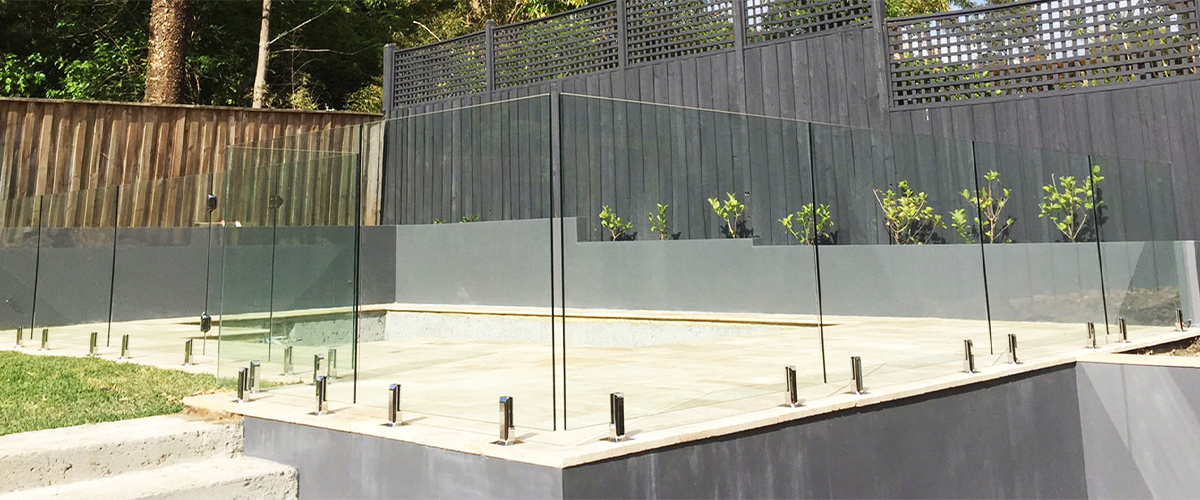
NSW Requirements for Pool Fences & Barriers:
- Must be at least 1.2 metres high (from the finished ground level). This is to stop small children climbing over it.
- Must not have a gap under it bigger than 10cm (again from the finished ground level). This will prevent children getting under it.
- Must not have gaps of more than 10cm between any vertical bars in the fence. This will stop children squeezing through between the bars.
- If a boundary fence is part of the pool fence, it must be 1.8m high.
- If the fence contains horizontal climbable bars, they must be at least 90cm apart. This will stop small children climbing up to the top of the fence and getting over.
- Perforated or mesh barriers must have holes no greater than 13mm if the fence height is 1.2m. This will stop children being able to climb it, as their feet will not fit in the holes. If a perforated or mesh barrier is 1.8m high, holes can be greater than 13mm as long as they do not exceed 100mm.
- Importantly, the pool fence must be well maintained and in good working order. For example, there must be no holes or broken fence palings or rails. It is of no use if a pool fence was compliant when built, but has fallen into disrepair and no longer meets the requirements.
Non-Climbable Zone
Pool owners are required by law to ensure they maintain a “non-climbable zone” around the pool, to prevent children climbing over the fence and into the pool area. The non-climbable zone is measured as 90cm in an arc shape from the top of the pool fence towards the ground outside the pool fence. 30cm inside the pool fence is also required to be a non-climbable zone.
There must not be any objects at all within the non-climbable zone. This includes (but is not limited to) trees, shrubs and pot plants, rocks, barbecues, and garden furniture, that a child could use to step on and climb over the fence.
As described above under the requirements for fencing, any horizontal climbable bars on the fence must be at least 90cm apart.
Pool Gates
A gate in a pool fence:
- Must swing outward (away from the pool area). If it does not, it must be re-hung so that it does.
- Must close automatically from any open position (be self-closing) – must not require closing manually.
- Must automatically lock (self-latch) when closing.
- Must require manual opening of the latch (can’t just be pulled open when locked).
- The release for the gate latch must be at least 1500mm from the ground, or else it must be on the inside of the fence, surrounded by a 450mm shield and needing to be accessed by reaching over the fence or through an access point 1200mm above ground level. The gate latch must be at least 150mm below the top of the fence or latch shield access point.
- As with pool fencing, the gate and latching and closing mechanisms must also be kept well maintained and in good working order. If the gate is not shutting and locking automatically as described here, it must be permanently fastened shut until a new lock and/or closing device is installed.
- Finally, but very importantly: The gate must never be propped open – always kept shut. It is no use having a working gate that can self-close if it is propped open.
Guidelines for Pool Fence and Gate Maintenance
- All bolts, screws and fasteners in the fence must be tight and in good order.
- Any that are loose should be tightened, or replaced if necessary.
- Hinges, locks and latches in self-closing gates should be sprayed with lubricating oil or silicone.
- Check the manufacturer’s information for instructions on maintenance.
Proper, timely maintenance can help prevent faults relating to self-closing and self-latching gates. This will save you needing to replace them as often.
Windows and Doors
Windows and doors are no longer allowed to be part of the pool barrier for new swimming pools, although some older pools may have this as it was permitted in the past.
If you do have windows and doors that form part of the pool barrier, they must be child-resistant and comply with regulations. Windows that form part of the pool barrier must not open more than 10cm, or else they must be completely covered by bars or a screen. Doors must be self-closing and self-latching (as with pool gates), have the latching device at least 150cm from the ground, a non-climbable zone of 90cm, and not open towards the pool.
An important note: If the swimming pool barrier is modified, altered or re-built, the current laws and regulations apply, and these exemptions as well as any others do not apply anymore.
Signage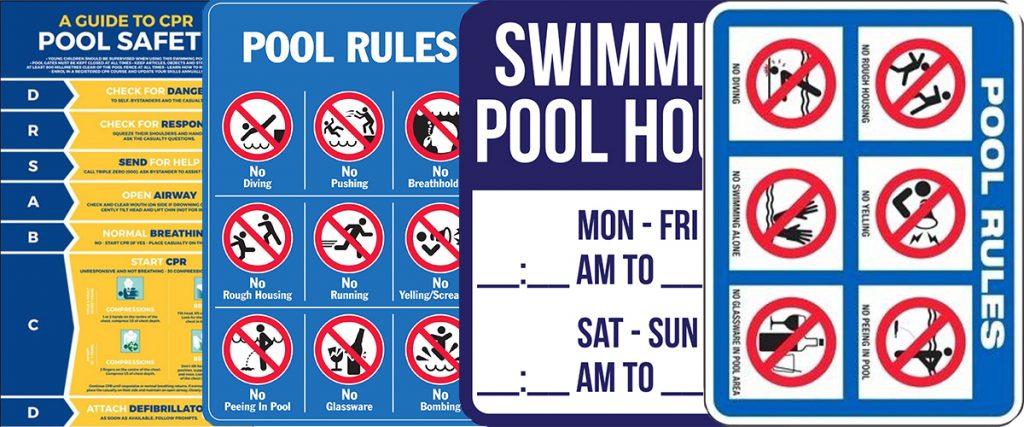
Clear and appropriate warning signs must be attached to the pool fence and gates. This must include instructions for cardiopulmonary resuscitation (CPR) techniques. The sign must be in good condition and able to be easily read from 3 metres away.
I’ve Had a Pool and Pool Fence Constructed. Now What?
There are some certification requirements that apply to your new swimming pool and fence before the pool can be used.
Registration
From 29 October 2013, any new swimming pool must registered on the NSW Swimming Pool Register. Go to the NSW Swimming Pool Register Website and follow the instructions for registering your pool and spa. This includes a checklist for self-assessing the safety of your pool. Once you have completed the registration process, you will receive a Registration Certificate confirming that your pool is on the NSW Swimming Pool Register.
If your swimming pool is inspected and found not to be registered, you may be fined.
Certification
Once you have registered your pool on the NSW Swimming Pool Register, you can have it inspected, and a Certificate of Compliance can be issued. You will need to book an inspection of your pool through your local council or a private certifier. Ensure they are accredited in the correct category by the Building Professionals Board.
The certifier will inspect your pool and pool fence. If it is compliant, they will issue a Certificate of Compliance. This certificate is valid for 3 years, unless a subsequent inspection within the 3 year period finds it to be non-compliant.
If it is not compliant, they will issue a notice and Certificate of Non-Compliance. The notice will list the areas of non-compliance and the action required to rectify it to make it compliant. You then have 6 weeks to rectify the non-compliance before the certifier must inform your local council. Note that the local council must be notified immediately if the certifier is of the opinion that the swimming pool poses a significant risk to public safety. Some swimming pool certifiers can carry out the repairs to make it compliant, or you can do it yourself or hire someone else to do it for you. Once you believe your pool is compliant, book in another inspection to have it certified as compliant.
According to the Building Professionals Board, over 95% of swimming pools require at least 3 inspections to become compliant.
An Occupation Certificate, issued under the Environmental Planning and Assessment Act 1979, that is less than 3 years old and authorises the use of the swimming pool, can be used instead of a Certificate of Compliance. This applies for new houses which have a swimming pool constructed at the same time as the house, so the Occupation Certificate covers the house and the swimming pool.
If your pool fence remains non-compliant, you can be fined up to $5,500 by your local council, or be given an on-the-spot fine of $550. Councils perform routine inspections of all registered swimming pools. They also inspect pools in response to complaints or concerns, for example from neighbours.
If your Certificate of Compliance has expired (3 years has passed since it was issued), you do not need to get a new one, unless you are planning to sell or lease your property. There are exceptions for tourist, visitor and multi-occupancy developments. These need to have a current Certificate of Compliance at all times.
Buying, Selling or Leasing a Property With a Swimming Pool
If you are selling a property with a swimming pool, you must now have:
- A Certificate of Registration, AND EITHER
- A Certificate of Compliance, OR
- A relevant Occupation Certificate authorising the use of the swimming pool, OR
- A Certificate of Non-Compliance.
If the contract does not have the registration, compliance or occupation certificates, or has a Certificate of Non-Compliance, the buyer may rescind the contract within 14 days of the contract date.
If you buy a property with a swimming pool, and the pool has a Certificate of Non-Compliance, you must rectify the areas of non-compliance within 90 days of settlement, have the pool inspected and obtain a Certificate of Compliance.
If you are leasing a property with a swimming pool, you must have:
- A Certificate of Registration, AND EITHER
- A Certificate of Compliance, OR
- A relevant Occupation Certificate authorising the use of the swimming pool.
You do not need to get a new Certificate of Compliance if you lease the property to a new tenant. The Certificate of Compliance is valid for 3 years.
Pool Fencing – It’s Your Responsibilty
Poof fencing requirements are in place to protect young children from drowning in backyard swimming pools. If you own a property with a swimming pool, it is your responsibility to ensure that your pool is fenced in compliance with the current regulations. This will help ensure the safety of children and avoid the potential of being fined for non-compliance.
References and Further Information:
